Related Research Articles

John Hoyer Updike was an American novelist, poet, short-story writer, art critic, and literary critic. One of only four writers to win the Pulitzer Prize for Fiction more than once, Updike published more than twenty novels, more than a dozen short-story collections, as well as poetry, art and literary criticism and children's books during his career.
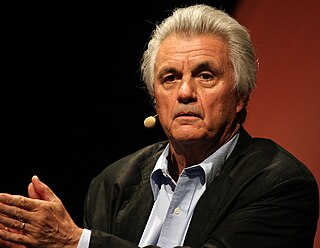
John Winslow Irving is an American-Canadian novelist, short story writer, and screenwriter.

Thomas Kennerly Wolfe Jr. was an American author and journalist widely known for his association with New Journalism, a style of news writing and journalism developed in the 1960s and 1970s that incorporated literary techniques. Much of Wolfe's work was satirical and centred on the counterculture of the 1960s and issues related to class, social status, and the lifestyles of the economic and intellectual elites of New York City.

Creative nonfiction is a genre of writing that uses literary styles and techniques to create factually accurate narratives. Creative nonfiction contrasts with other non-fiction, such as academic or technical writing or journalism, which are also rooted in accurate fact though not written to entertain based on prose style. Many writers view creative nonfiction as overlapping with the essay.
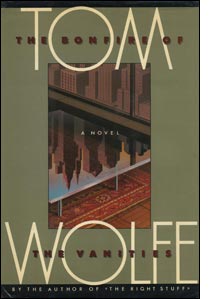
The Bonfire of the Vanities is a 1987 novel by Tom Wolfe. The story is a drama about ambition, racism, social class, politics, and greed in 1980s New York City, and centers on three main characters: WASP bond trader Sherman McCoy, Jewish assistant district attorney Larry Kramer, and British expatriate journalist Peter Fallow.
New Journalism is a style of news writing and journalism, developed in the 1960s and 1970s, that uses literary techniques unconventional at the time. It is characterized by a subjective perspective, a literary style reminiscent of long-form non-fiction. Using extensive imagery, reporters interpolate subjective language within facts whilst immersing themselves in the stories as they reported and wrote them. In traditional journalism, the journalist is "invisible"; facts are meant to be reported objectively.
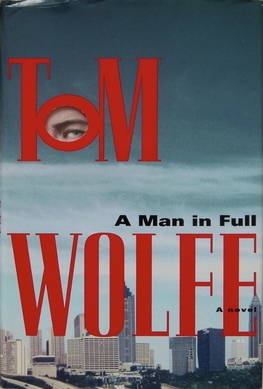
A Man in Full is the second novel by Tom Wolfe, published on November 12, 1998, by Farrar, Straus & Giroux. It is set primarily in Atlanta, with a significant portion of the story also taking place in the East Bay region of the San Francisco Bay Area.
James Douglas Graham Wood is an English[a] literary critic, essayist and novelist.

Pamela Hansford Johnson, Baroness Snow, was an English novelist, playwright, poet, literary and social critic.
Daniel Fuchs was an American screenwriter, fiction writer, and essayist.

Hooking Up is a collection of essays and a novella by American author Tom Wolfe, a number of which were earlier published in popular magazines.
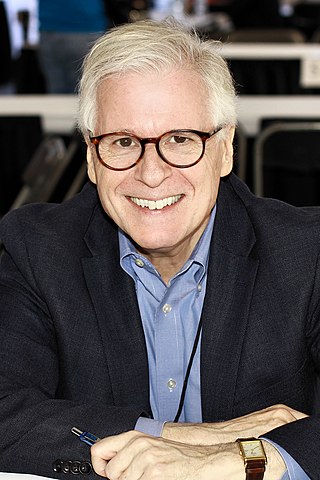
Thomas Mallon is an American novelist, essayist, and critic. His novels are renowned for their attention to historical detail and context and for the author's crisp wit and interest in the "bystanders" to larger historical events. He is the author of ten books of fiction, including Henry and Clara, Two Moons, Dewey Defeats Truman, Aurora 7, Bandbox, Fellow Travelers, Watergate, Finale, Landfall, and most recently Up With the Sun. He has also published nonfiction on plagiarism, diaries, letters and the Kennedy assassination, as well as two volumes of essays.
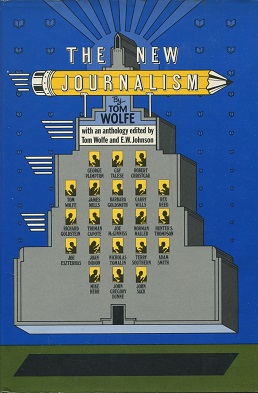
The New Journalism is a 1973 anthology of journalism edited by Tom Wolfe and E. W. Johnson. The book is both a manifesto for a new type of journalism by Wolfe, and a collection of examples of New Journalism by American writers, covering a variety of subjects from the frivolous to the deadly serious. The pieces are notable because they do not conform to the standard dispassionate and even-handed model of journalism. Rather they incorporate literary devices usually only found in fictional works.
The non-fiction novel is a literary genre that, broadly speaking, depicts non-fictional elements, such as real historical figures and actual events, woven together with fictitious conversations and uses the storytelling techniques of fiction. The non-fiction novel is an otherwise loosely defined and flexible genre. The genre is sometimes referred to using the slang term "faction", a portmanteau of the words fact and fiction.

In literature, a serial is a printing or publishing format by which a single larger work, often a work of narrative fiction, is published in smaller, sequential instalments. The instalments are also known as numbers, parts, fascicules or fascicles, and may be released either as separate publications or within sequential issues of a periodical publication, such as a magazine or newspaper.

Visiting Mrs Nabokov is a 1993 collection of non-fiction writing by the British author Martin Amis.

Carol Sklenicka is an American biographer and literary scholar known for her authoritative, full-scale biographies of two important figures in late twentieth-century American literature: acclaimed short story masters Raymond Carver and Alice Adams.

A novelist is an author or writer of novels, though often novelists also write in other genres of both fiction and non-fiction. Some novelists are professional novelists, thus make a living writing novels and other fiction, while others aspire to support themselves in this way or write as an avocation. Most novelists struggle to have their debut novel published, but once published they often continue to be published, although very few become literary celebrities, thus gaining prestige or a considerable income from their work.

The literature of New England has had an enduring influence on American literature in general, with themes such as religion, race, the individual versus society, social repression, and nature, emblematic of the larger concerns of American letters.

"What Is the Best Work of American Fiction of the Last 25 Years?" is an informal opinion poll conducted in 2006 by the New York Times Book Review (NYTBR) to determine "the single best work of American fiction published in the last 25 years." Eligible works were those written by an American author and published during the quarter-century period from 1980 through 2005. The poll was conducted by NYTBR editor Sam Tanenhaus, who sent letters to literary figures requesting their participation and received 124 responses. The results were published on May 21, 2006, in the Sunday edition of the New York Times. An essay by A. O. Scott, titled "In Search of the Best", reflected on the results and the premise of the "Great American Novel".
References
- 1 2 3 Jack Miles (1989-11-12). "Endpapers: Tom Wolfe's Literary Manifesto: A Response". The Los Angeles Times .
- 1 2 Jonathan Yardley (1989-10-30). "For American Novelists, It's Time to Get Real". The Washington Post .
- ↑ "Tom Wolfe throws down a glove; Back to reality". The Economist . 1989-11-11.
- 1 2 3 Robert Towers (1990-01-28). "The Flap Over Tom Wolfe: How Real is the Retreat from Realism?". The New York Times .
- 1 2 Freddie Baveystock (1990-02-22). "Bonfire of the literary world". The Times .
- ↑ Charles Trueheart (1990-04-21). "Tom Wolfe, Taming His College Critics; Collection a Hopkins Degree & Defending the Harper's Essay". The Washington Post .
- 1 2 Lev Grossman (2004-11-08). "I am Still Tom Wolfe". Time Magazine .
- ↑ Craig Offman (2000-01-21). "Tom Wolfe calls Irving, Mailer and Updike "the Three Stooges"". Salon.com.